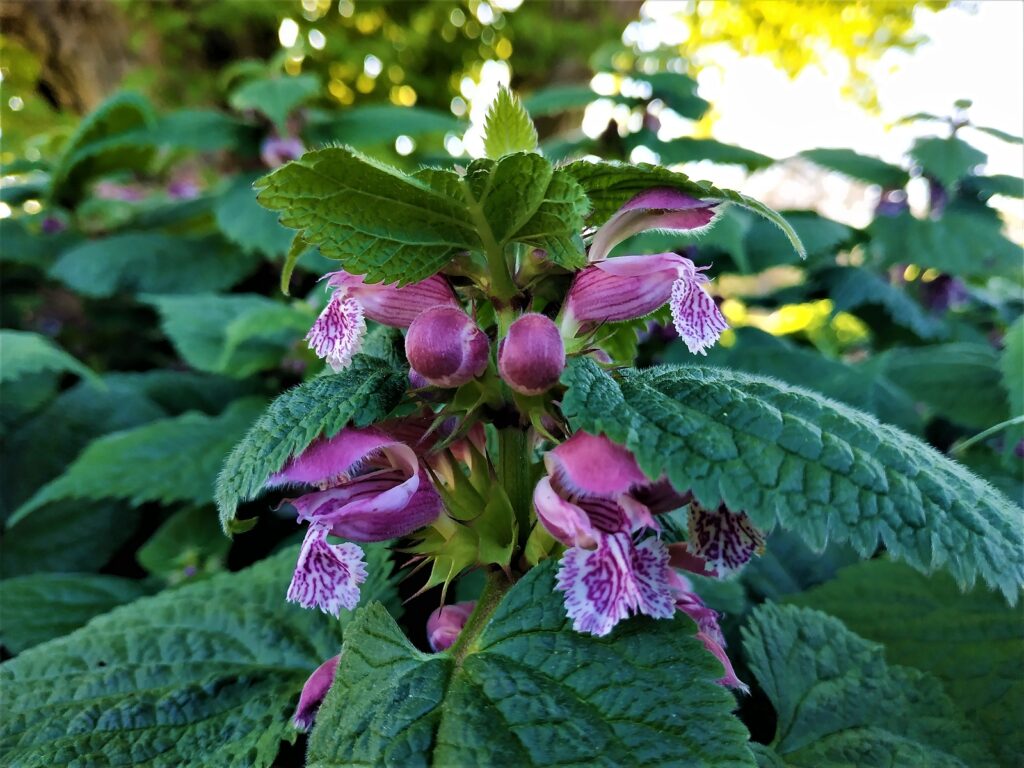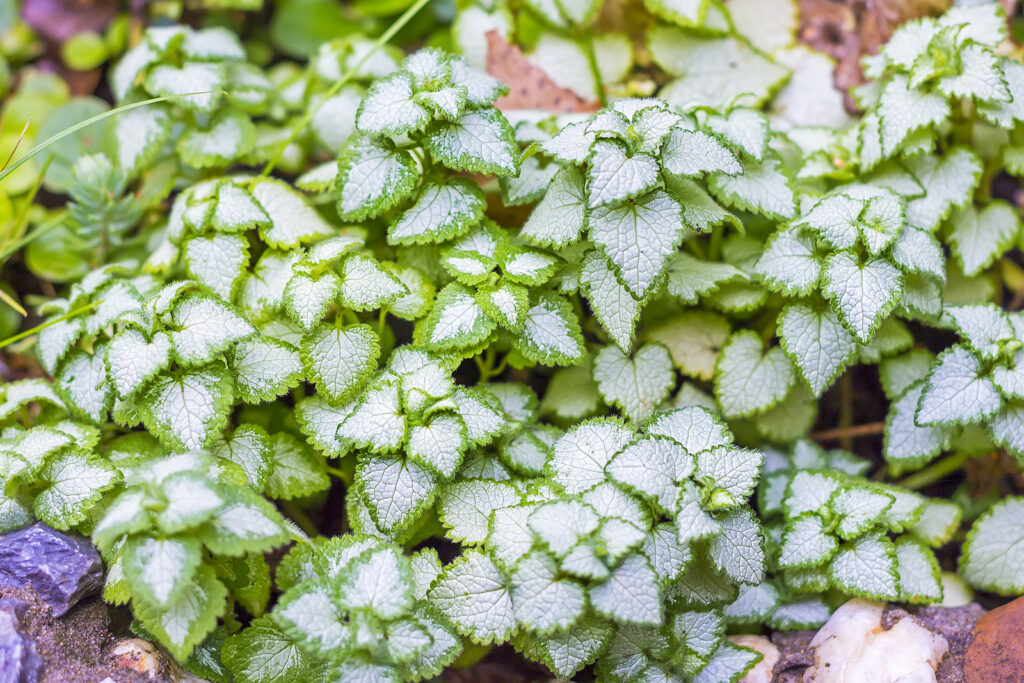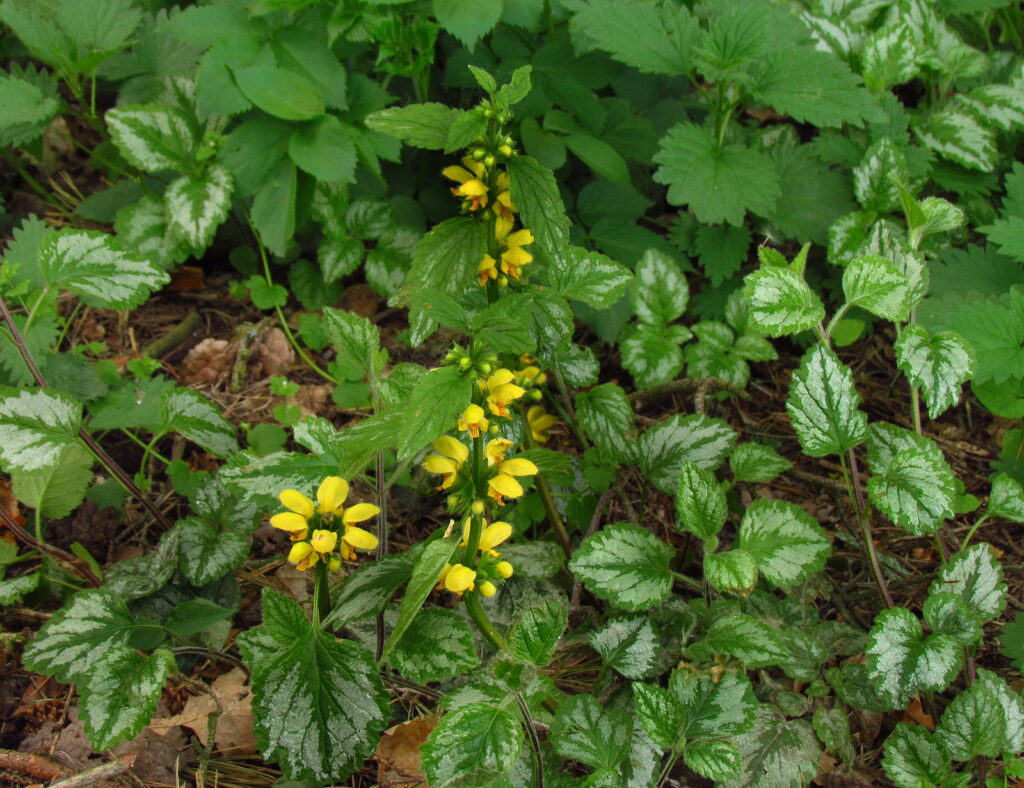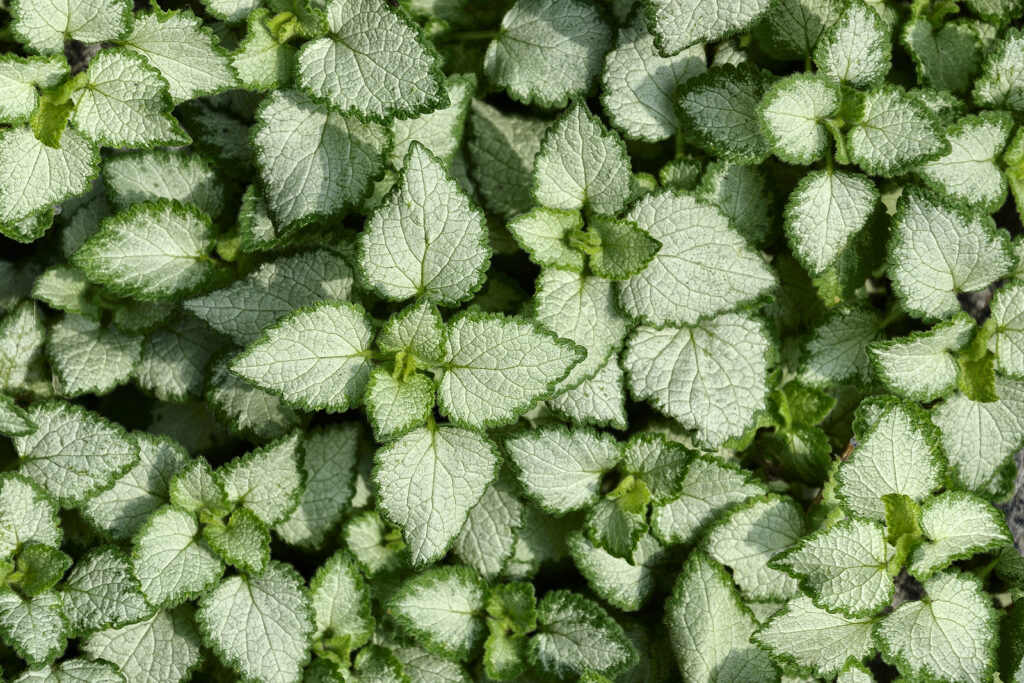Lamium, commonly called spotted dead nettle, is a demur low-growing evergreen in mild climates. Its silvery mottled leaves and trailing stems can highlight shaded beds and walkway edges. Clusters of pink, white, or yellow miniature snapdragon-like flowers give spotted dead nettle extra appeal.
The genus from which spotted dead nettle comes includes some nasty weeds including stinging nettle (Urtica dioica), but spotted dead nettle is safe to touch (hence the name “dead nettle”) and make a showy hanging plant indoors or out.
The Lamium genus is a member of the Mint family. Lamium are easy to grow. They are propagated by division and seed. Some varieties are easily naturalized.

Get to know Lamium
- Plant type: Perennial groundcover
- Growing Zones and range: Zones 3-9
- Hardiness: Hardy
- Height and width: 8 to 12 inches (20-30cm) tall, 12 to 24 inches (30-61cm) wide
- Flowers: Pink and purple blooms
- Bloom time: Spring through summer
- Uses: Plant in shady spots, under trees
- Common name: Spotted dead nettle
- Botanical name: Lamium maculatum and species
- Family: Lamiaceae
- Origin: Woodlands of Europe and Asia and widespread in the Mediterranean
Where to plant Lamium
- Plant Lamium in full sun, especially in Zones 3-5, but prefers shade.
- Grow Lamium in humus-rich, moist soil.

When to plant Lamium
- Set Lamium in the garden in spring or fall.
- Sow seeds in containers in a cold frame in autumn or spring.
Planting and spacing Lamium
- Space Lamium 12 to 24 inches apart. Plant several plants for the best effect.
- Sow seeds 1/8 inch deep in evenly prepared soil or in a well-drained potting mix if starting seeds indoors.
How to water and feed Lamium
- Keep the soil evenly moist for Lamium; ample water is needed in full sun. Established dead nettle can tolerate drought.
- Lamium will benefit from occasional fertilizing.

Lamium care
- Cut back Lamium by one-third after blooming to keep plants from becoming rangy.
- Divide Lamium in spring or fall.
- Slugs, leaf, spot, and root rot can be a problem.
Lamium pests and diseases
- Lamium is susceptible to downy mildew, powdery mildew, and leaf spot diseases.
- Slugs and snails will attack Lamium.
Lamium propagation
- Divide Lamium in spring or autumn.
- Sow seeds in containers in autumn or early spring.
- Take stem cuttings of non-flowering shoots in early spring.

Lamium varieties to grow
- Lamium armenum: slow-growing, non-invasive, mat-forming perennial; solitary, long-tubed and hooded, pale pink to white flowers.
- L. galeobodolon: very invasive. stoloniferous perennial with erect creeping stems with spikes of whorled yellow flowers; cultivars include ‘Silver Angel’ and ‘Florentium’.
- L. garganicum: clump-forming with upright stems; upright spikes of pale pink flowers.
- L. maculatum: the most popular variety; low-growing perennials with ascending steam; heart-shaped leaves are silvery-white; bears whorled red-purple sometimes white or pink flowers; cultivars include: ‘Beacon Silver’ has pale pink blooms and very silvery leaves; ‘White Nancy’ has white flowers and silvery leaves; ‘Pink Pewter’ has pink flowers; ‘Chequers’ has purplish flowers and silver-centered green leaves.
- L. orvala: non-invasive, clump-forming perennial with spikes of pinkish-purple flowers.



